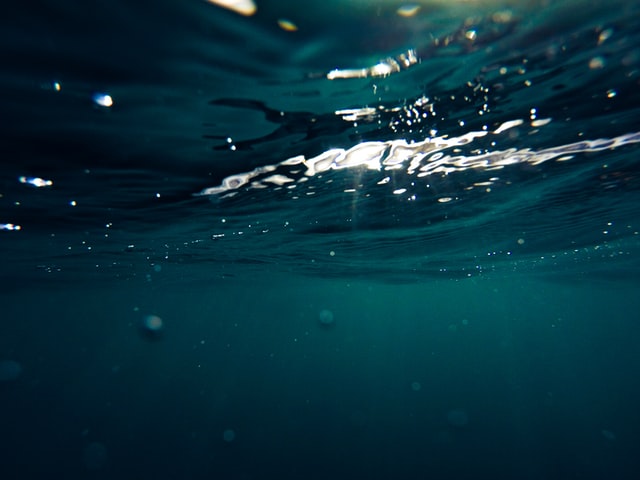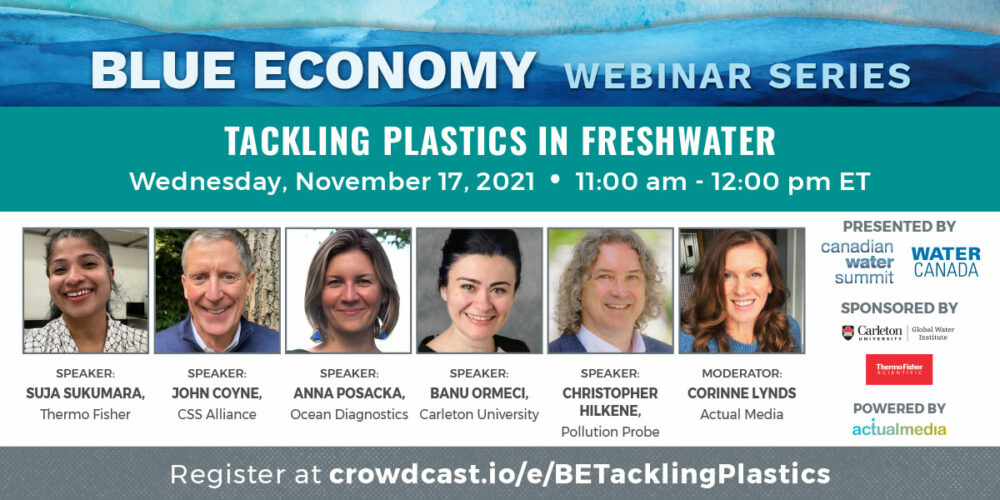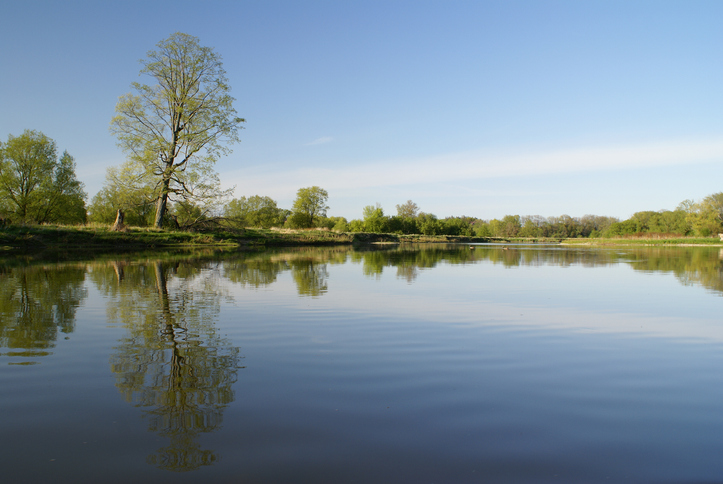There has been a significant amount of focus on the plastic that ends up in our oceans. At the same time, we need to consider the plastics that are entering our freshwater.
An estimated 10,000 tonnes of plastic waste are entering the Great Lakes every year, as reported by CBC. Information about plastic pollution in Canadian freshwater bodies outside the Great Lakes Basin is limited; this is because most studies on the topic have focused on this region.
To better understand the challenges and opportunities associated with tackling plastics in Canada’s freshwater, Water Canada hosted a discussion with industry experts in November 2021. The industry experts included:
- Christopher Hilkene from Pollution Probe
- Suja Sukumaran from Thermo Fisher
- Anna Posacka from Ocean Diagnostics
- Jesse Vermaire from Carleton University
How big is the current challenge we’re facing?
The Canadian water industry is in the early stages of understanding the current challenges associated with plastics in our freshwater. As a result, the approach for understanding the amount of plastics in our freshwater is derived from the work that has been done to understand the amount of plastics in our oceans. For example, some modelling that has been done around the Great Lakes is based on problems we’ve seen in oceans.
“The current understanding is that we’ve put about 10 million kilograms, or 22 million pounds of plastic into the Great Lakes area,” said Hilkene. “Everyone is familiar with the garbage patches in our oceans. Well, we have microplastic clusters in the Great Lake and the concentrations are every bit as dire as they are in the ocean. So I think it’s an equal but different problem. Because it’s so new, I think it’s a really interesting area to be working on because there’s a whole lot to be done in terms of knowledge building, as well as the actions to address it.”
Posacka added that we can build on the work that has been done on understanding the amount of plastics in freshwater systems that act as channels to our oceans.
“We have evidence that rivers receive large quantities of plastic litter,” said Posacka. “As Suja mentioned, the larger forms, the macroplastics, are an important component of the microplastics that we find in our environment. It’s estimated that approximately 80 per cent of microplastics come from the breakdown of larger plastics.”
Of the microplastics we’re finding in our rivers and wastewater effluent, microplastics from fibers, presumably from our clothing, are the most common type of plastic we’re finding.
“About 90 per cent to 95 per cent of all these microplastic pieces are these microfibers,” said Vermaire. “So it’s a huge component in terms of pieces of plastic, not necessarily weight. The other thing with the microfibers that I think we’re just learning is how easily they’re transported in the atmosphere. That becomes a more difficult problem to control in terms of plastic pollution, because essentially these microfibers are found everywhere. They don’t really have a point source that you can use some sort of engineering solution to help remove them.”
What are the opportunities for technologies and technology providers?
There are a couple of opportunities for technologies and technology providers to help tackle plastics in our freshwater. One of the opportunities is at the manufacturing level.
“One of the greatest unknowns right now is the extent to which textile factories and manufacturing facilities are releasing microfibers into the environment. But we have a reason to believe that it’s likely to be significant,” said Posacka. “One opportunity for technological solutions has to do with treating and preventing waste being released at the manufacturing level. Most of these factories are not in Canada so plastic pollution is truly a transboundary issue.”
The other opportunity for technologies and technology provides has to do with household-based interventions and treatments.
“I think there’s an opportunity to look for solutions that help treat greywater at the household level before it gets into the wastewater plant,” said Posacka. “I think it’s going to be a lot more expensive to introduce a technology intervention at a wastewater treatment plant to address the few percent of microplastics that aren’t treated with the conventional wastewater treatment.”
Thank you to Thermo Fisher and the Global Water Institute at Carleton University for sponsoring the discussion.
Simran Chattha is the editor of Water Canada.
The original story was featured in the Jan/Feb 2022 issue of Water Canada. A recorded version of the webinar can be found here.










